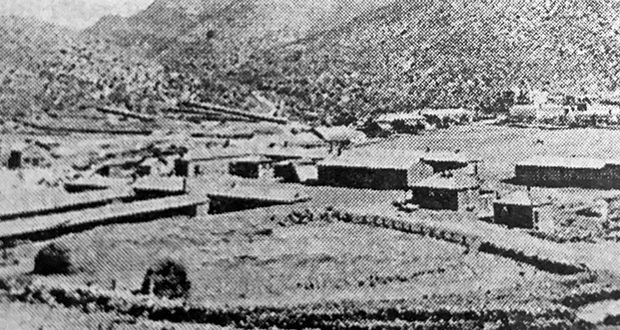Fort Bowie, 1886
Fort Bowie is linked in history with the Apache wars of the 1870s and ’80s. But it owes its existence to the Battle of Apache Pass in 1862 and the Confederate invasion of what was then New Mexico Territory.
Normal Headquarters
During World War I, there would have been no young men in this photo—most had been sent overseas. But by 1920, the boys were back, the economy was beginning to boom, dating was in style again and the Confection Den was one of the places to go.
Luisa Ronstadt Espinel
This is Tucson pop star Linda Ronstadt’s great aunt in a publicity photo taken in the 1920s. Her stage name was Luisa Espinel. She was a national entertainer—a contralto who performed opera, sang Spanish folk songs and acted in movies.
Antelope (Old Town) Spring
Ed Whipple was born in Iowa in 1856. He ran away from home at an early age to seek his fortune in the West. Like most men of his era, Whipple met the demands of the frontier with wit and versatility.
Pearce Mining Metropolis
This board and batten shack at the mining camp of Pearce in southeastern Arizona was photographed sometime after 1894, the year of a gold and silver strike there. The shack appears to have been built in two pieces – an addition is tacked on to the side of the main room with a one-by-four. The incongruous address above the doorway suggests that the shack was hauled from another location – perha[...]
No Ordinary Street
This is Tombstone’s Allen Street, looking west from Fifth Street in about 1880. The building in the foreground at right would soon be rechristened the Crystal Palace Saloon, and would become one of the best known drinking and gambling establishments in the Southwest.
The Finest Job God Ever Made
Thirty-one years after America’s transcontinental railroad was completed, this steam locomotive — #1673 — pictured above in a 1960s photograph — was put into service in Arizona.
Keams Canyon
Indian Agent Leo Crane took this photograph of the Hopi Agency in Keams Canyon in 1919. The agency was built on a site 13 miles east of First Mesa, in a narrow canyon on a spring-fed stream. The canyon was named after Thomas Varker Keams, who settled there in 1876.


















